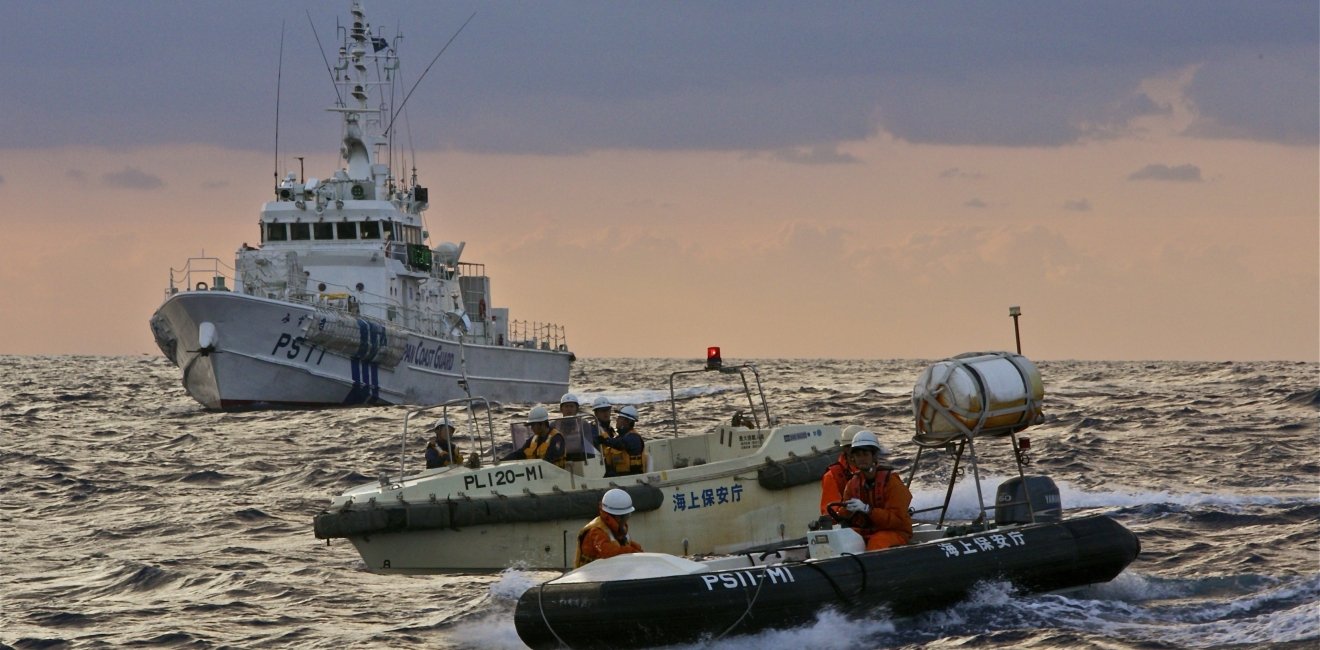In May 2015, a CNN exclusive showed a US military surveillance aircraft overflying features at low altitude that China had expanded by land reclamation in the South China Sea. The Chinese navy warned the aircraft to leave the area eight times in response to the plane’s claim that it was overflying international airspace. The incident caused uproar in the West, which portrayed China as trying to claim international waters as its own sovereign territory. In China, the incident spurred warnings that if the US bottom-line is that China has to stop land reclamation, then a China-US war is inevitable.
The good news is that despite the harsh rhetoric, a China-US war is not on the table. The bad news is that it is difficult to envisage lowering tensions in the near future. Using the vocabulary of Princeton professor Thomas Christensen, both China and the US are conditional revisionists in the South China Sea: China in the sense of attempting to expand the scope, depth and legitimacy of its presence, and the US in the sense of aiming at expanding the scope, depth and legitimacy of the US alliance system in the area. As such, they are both targets for each other’s deterrence and candidates for provocation. To lower tensions, they both need to build reassurance into deterrent threats. This entails persuading the counterpart that they have no interest in damaging the core values of the other so that neither of them fear being deprived of key assets if complying with the demands of the other. Reassurance is complicated by the fact that China and the US have different understandings of deterrence, increasing the likelihood of misunderstanding each other’s signals.
Blurred legal rights and strategic red lines bring Washington and Beijing at loggerheads. Over the past five decades, China has gradually established a presence in the South China Sea. In recent years, it has become controversial due to China’s emergence as a regional power with capabilities to pursue interests that are sometimes at odds with other powers. Regardless of the means China has used to acquire a presence, it has already occupied territory for so long that it is entitled to a presence. Instead, the grey zone in international law is the extent of China’s territorial sovereignty and maritime zones.
The precise extent of China’s claim to sovereign territory and maritime zones has not been clarified. It is also not clear if China bases its claim on arguments of effective control or history. Consequently, the extent to which Chinese jurisdiction interferes with Washington’s core interest of maintaining freedom of navigation is also not clear. This is a US core value coupled to the continued effectiveness of institutions of free trade and the alliance system which forms basic pillars of global US influence.
Even if China’s entitlement to territory and maritime zones were clarified, another legal grey zone is the issue of military activities within maritime zones. One issue that is not clarified is the extent to which artificial islands give entitlement to maritime zones allowing for restrictions on the military activities of other countries. A wider controversy also exists regarding 200 nautical mile exclusive economic zones allowing state rights over the exploration and use of marine resources and, according to countries such as China and India, restrictions on the military activities of other states. At present, a clear definition does not exist of the rights and obligations regarding such activities. Under these circumstances, international law will emerge from the customs developing through state practice. This invites Washington and Beijing to continue to manifest what they see as legitimate interpretations of the legal provisions. Thereby they try to make sure that their interpretation becomes law. This behavior sustains an unfortunate action-reaction pattern that maintains high tension levels and engenders risks of accidental use of force, as demonstrated by the May 2015 incident.
Mainstream moderate voices in China are careful to point out that China advocates peace and promotes security cooperation. However, if its core national interests are challenged, they also emphasize that China will respond without giving up an inch of its land or sea territory. China signals that Beijing prioritizes stability, but challenges to Chinese alleged rights to territorial sovereignty and maritime zones calls for a response that allows China to continue to exercise jurisdiction. The red line for China’s willingness to use force is blurred, and it becomes hard to distinguish moderates from the hawkish minority which recommends more aggressive use of force. Similarly, US Defense Secretary Ashton Carter’s authorization of his staff in May 2015 to consider options for flying US Navy surveillance aircraft over islands and sending US Navy ships within twelve nautical miles of features that have been subject to Chinese land reclamation efforts blurs the red line concerning Washington’s willingness to use force. At issue here is if the US is correct in its assessment that China cannot claim territorial waters around artificially created islands. International law does not provide a clear verdict. However, Washington’s core interest in protecting the principles that allow commercial and military traffic to move freely in international waters and airspace is at odds with the advantages of avoiding legal grey zones when using military instruments for purposes of deterring China.
The risk of accidental use of force is not merely a tactical issue that concerns the potential for misunderstandings between commanders at sea that arises due to a lack of common rules of engagement. The US and Chinese South China Sea policies displays the use of different understandings of deterrence which engender sustained misreading of intentions as provocations.
Chinese deterrence encompasses the option of using compellence against states that are seen to pursue offensive strategies to make the other give up, even if such strategies have not resulted in the use of deadly force. This definition of deterrence emerges in China’s tradition of using force despite military weaknesses in order to slow, halt or reverse trends that Chinese leaders perceive as working against China’s long-term security interests. By contrast, Western-style deterrence does not include the possibility of using force as a response to political, economic or diplomatic challenges. China sees its deterrence posture involving a military build-up on features in the South China Sea and the use of law enforcement capabilities to defend alleged sovereign rights as self-defensive in nature, aimed at dissuading and not coercing an opponent from taking specific actions. However, the US reads this behavior as provocations that might jeopardize its fundamental interests and values.
US deterrence entails sustaining a forward military presence in the Asia-Pacific to protect core interests and values, cooperating with its network of allies and strategic partners on deterring other states from challenging fundamental interests such as the freedom of navigation. US patrolling within twelve nautical miles of artificial islands and overflying the airspace of such islands are not considered violations of sovereignty by using military capabilities. Instead, they are considered manifestations that international waters cannot be turned into national waters by means of land reclamation. Such measures are meant to deter China from behaving as if these features are sovereign Chinese territory. However, China reads this behavior as provocations from a power with no right to exercise offshore deterrence in waters and airspace that is considered to be within Chinese jurisdiction.
When Presidents Xi and Obama meet in the US later this month, the South China Sea issue will undoubtedly be on the agenda as a thorny issue hampering their efforts to stabilize the bilateral relationship. Both sides are determined to prevent armed conflict. Nevertheless, reassurance is hard to make effective when differences regarding interpretations of legitimacy, perceptions of proper state conduct and definitions of core interests and values are as pronounced as in this case.
Credible reassurance requires that China strengthens its commitment to the freedom of navigation in the South China Sea. Paying lip service in support of the concept is not enough. Indeed, Beijing has already done so on several occasions. China must clarify the implications of its efforts to become a global maritime power. No one expects China to reveal state secrets, but Beijing can afford to admit that as it sends its navy on reconnaissance missions to places like Guam and the Arctic outside of its home region, China too will need to maintain the principle of the freedom of navigation. It would also be worth clarifying if China considers building an alliance system based on its strategic partnerships that involves permanent overseas military deployments. If so, in the interest of stability and good neighborly relations it might be worth it for China to refrain from threats of using force in areas such as the South China Sea where sovereignty and maritime zones remain disputed. Similarly, changing the state of play concerning the freedom of navigation through land reclamation is also a challenge to US core interests that should be avoided.
Credible US reassurance that Washington has no intention of interfering with sovereignty and maritime zone issues in the South China Sea is also needed. This requires more than official statements confirming that the US is not taking sides in sovereignty disputes. For example, the US could demonstrate that as China is becoming a maritime power operating in waters close to the US and core allies, the US has an interest in sustaining existing principles of sovereignty and maritime zone rights. This can be manifested by constraints such as refraining from letting the military navigate close to Chinese controlled artificial features in the South China Sea where these issues are in a legal limbo. It would serve both powers well to demonstrate that they are able to back down a little on issues that entertain fear of armed conflict and overshadow areas with more potential for cooperation, such as anti-terror initiatives, UN peacekeeping and climate change.
This article was originally published in Chinese by The Paper.






